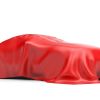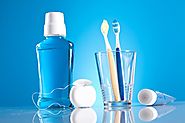-
About
- About Listly
- Community & Support
- Howto
- Chrome Extension
- Bookmarklet
- WordPress Plugin
- Listly Premium
- Privacy
- Terms
- DMCA Copyright
- © 2010-2025 Boomy Labs


 Emma Kalman
Emma Kalman
Listly by Emma Kalman
Here at NYC Dental Implants, we are passionate about preventative dentistry, or to put it another way, we’d rather help your natural teeth last as long as possible. That is why we are the best cosmetic dentist nyc. The best way to keep your teeth and gums in great shape is to make sure you have an excellent oral hygiene routine. This is easy to do and doesn’t take very long each day. The rewards are good dental health and potentially lower dental bills in the longer term.
Every day, your teeth become coated with a sticky plaque biofilm consisting largely of bacteria. Plaque soon hardens into tartar, a substance that can only be removed professionally during a dental cleaning here at best cosmetic dentist nyc. The bacteria contained in plaque and tartar release toxins that cause infection and inflammation. Regular brushing and flossing helps to keep plaque levels low, preventing this effect from occurring and lowering your risk of tooth decay and gum disease.

You really need to brush at least twice a day and the best time to do so is first thing in the morning and last thing at night. If you want to brush after mealtimes, try to wait half an hour to an hour afterward as this allows acid levels in the mouth to begin normalizing. After you eat, acidity increases due to the activity of bacteria that thrive on food particles.
Additionally, some foods are naturally acidic. This increased acidity allows essential minerals to be leached from your tooth enamel which has the effect of softening it and increasing the risk of acid erosion. After a while, acidity levels decrease, allowing the tooth enamel to begin re-hardening. By waiting half an hour before brushing, you help to reduce the effects of acid erosion on your teeth.
When brushing your teeth it is often easy to miss out areas so it’s best to approach this task methodically. Imagine your mouth being split into four quarters or quadrants and concentrate on thoroughly cleaning each quadrant before moving onto the next. You need to spend at least 30 seconds on each quadrant, making sure you cover all tooth surfaces. Holding your toothbrush at a 45° angle will enable the bristles to reach right down to the gum line as this is the area where plaque often builds up. Don’t forget to brush the chewing surfaces and inner surfaces of your teeth.
If you have an electric toothbrush then it’s easy to know when to move onto the next section of your mouth and when your two minutes brushing time is up. However, you do not need to use an electric toothbrush to get great results as it’s far more about using the right technique. In this case, you might want to keep a small timer in your bathroom so you can check you are brushing for long enough each time as it is surprisingly easy to overestimate.
We know flossing is not something most people relish, but it is important if you want to have healthy teeth and gums. Flossing helps to remove plaque from around the gum level and from in between your teeth, as well as getting rid of pieces of food debris that may have become trapped in between your teeth. If you hesitate about flossing every day, try to remember that the contact areas in between your teeth account for approximately one-third of your tooth surfaces and these areas will remain uncleaned if you fail to floss each day.
The best time to floss is at night right before bed and it doesn’t matter if you choose to floss before or after you clean your teeth. The reason for flossing last thing at night rather than first thing in the morning is because your mouth is drier overnight. These drier conditions are ideal for bacteria to thrive, particularly if there is plenty of food to be left in between your teeth.
People often break off a short length of floss, but really you need a length of approximately 18 inches to ensure you can use a fresh section in between each tooth. To make it easier to hold your floss, wind the ends around your index fingers and use your thumb and forefinger is to manipulate the floss. Carefully slide the floss in between your teeth until it is just below the gum line. Hold the floss against tooth and gently move it up and down as this way you will remove more plaque. Remove the floss from in between your teeth and wind it on so you have a nice fresh section for your next tooth. If you don’t like your current floss, experiment with some different types as some flosses are thicker or may be thinner and may make the experience more comfortable and easier.
If you do struggle with flossing, please ask our friendly dental team for help as we love educating patients on the best way to look after their teeth and gums at home. There is definitely a knack to flossing and a quick demonstration should make this process much easier. Alternatively, we can discuss various tools to use instead of dental floss and these can be particularly helpful for anyone who has limited dexterity that makes flossing tricky.
Choosing the right kind of toothbrush can also make a big difference to your oral hygiene routine. Please don’t make the mistake of picking a brush that has hard or medium hard bristles as ideally, you need one with quite soft bristles. This will still do an excellent job of keeping your teeth clean but will ensure that you do not damage your gum tissue or wear away your tooth enamel. Another thing to consider is whether or not the toothbrush head is small enough to fit right to the back of your mouth. If you have a particularly small mouth then it might even be worth your while purchasing a child-sized toothbrush.
Your toothbrush needs replacing every 2 to 3 months or as soon as you notice the bristles begin to look splayed or worn. Electric toothbrush heads often have built-in indicators showing when it’s time to change, but it doesn’t matter whether you choose to use an electrical manual toothbrush provided you use the right techniques when brushing.
If you have questions or need a dentist contact the best cosmetic dentist nyc.
